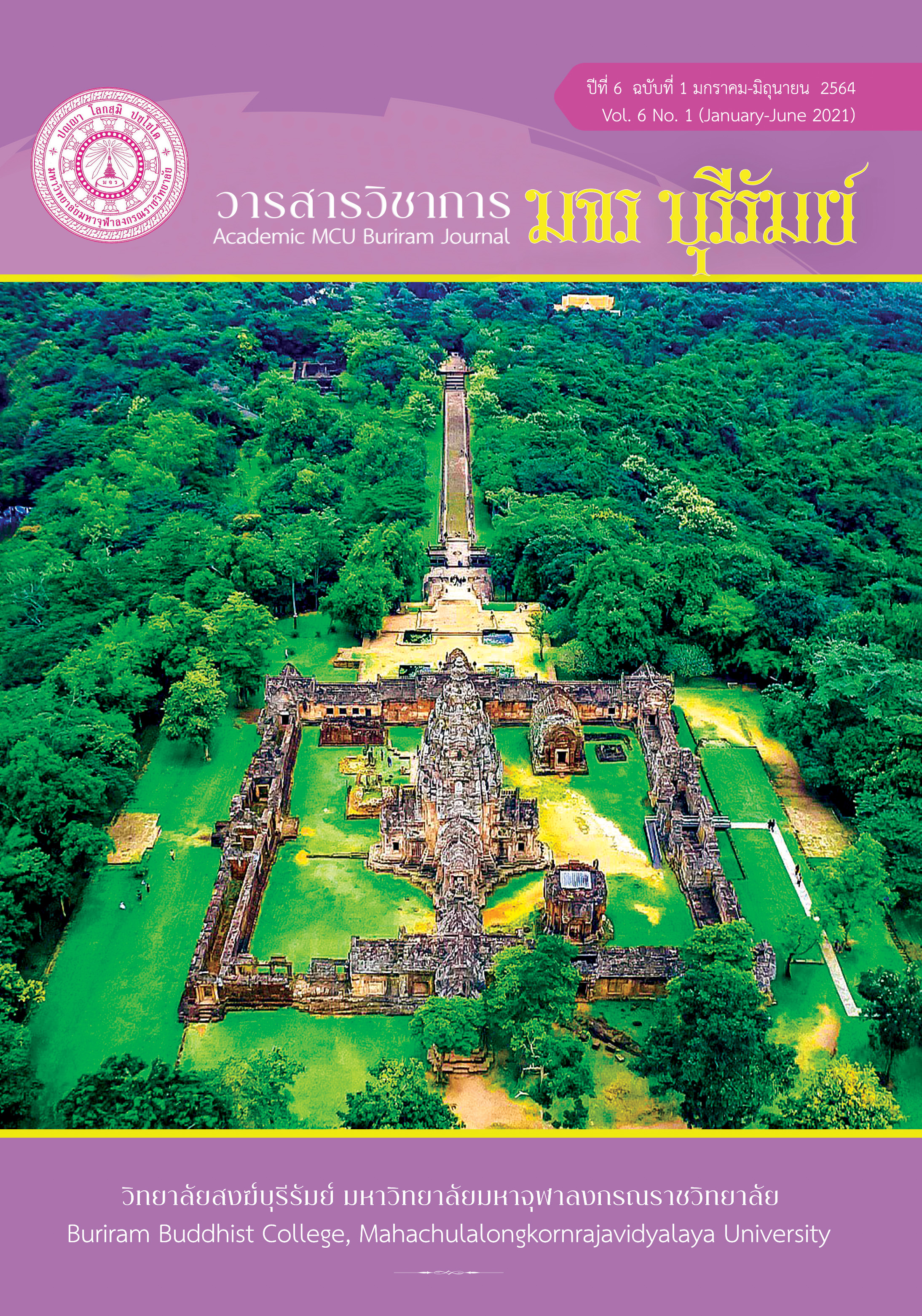Community Economic Uplift Model through Integrated Development of Khao Mao Local Identity Products for Nang Rong District, Buri Ram Province
Keywords:
Community Economic Uplift Model, Community Product Development, Local Identity, IntegrationAbstract
This research aimed to 1) create new and fair, integrated marketing strategies of Khao Mao (unripe rice) identity products for Nang Rong district, Buri Ram province, 2) set the integrated standard of processed Khao Mao local identity products to raise the community economy, Nang Rong district, Buri Ram province, 3) create the community economic uplift model through integrated development of Khao Mao local identity products for Nang Rong district, Buri Ram province, and 4) obtain the results of analysis of changes in the economy of Khao Mao community, Nang Rong District arising from agricultural adaptation to add value to tourism products of Buri Ram Province. The target group of this study included 30 leaders of the Kao Mao production group from three villages namely Bu Tawet village, Nong Kong sub-district, and Khok Wan and Busarakham villages, Nong Sano sub-district, Nang Rong district, Buri Ram province. This research applied both quantitative and qualitative tools. Research findings were that new marketing strategies included consignment, sales with activities for trail cooking, making fresh food in a trade fair, selling online, and exhibiting a booth in festivals and events. Increasing distribution channels is done by using 6Ps marketing mix. For product identity standards, standard control included appearance, texture, color, flavor, extraneous materials, food additives, packaging, quantity, nutrition facts label and appearance of the product. For a community economic uplift model, it was found that participatory action plan integration used integration of academic science and knowledge from Buriram Rajabhat University, network partners from both public and private sectors given community problems by dividing roles and duties to develop. Results of change in community economy were that the product value increased by 15-28.06%, the value added was as follows: Khao (Mao) Tu Phao Kham gained 136.22%, Khao Mao Luk Chin gained 115.30%, Khao Mao Kluk gained 107.21%, Khao Mao Mee gained 98.31%, and Khao Mao Krayasart gained 88.47%. the group committee would be the allocator of procurement of raw materials to distribute income equally.
References
จารินี ม้าแก้ว. (2560). รูปแบบการพัฒนาผู้นำเยาวชนวิศวกรรมบูรณาการเพื่อการพัฒนาชุมชน. วารสารวิชาการ มหาวิทยาลัยราชภัฏบุรีรัมย์ มนุษยศาสตร์และสังคมศาสตร์, 9(2), 99-115.
จารินี ม้าแก้ว. (2562). รูปแบบการบริหารจัดการระบบการผลิตข้าวเม่าแบบบูรณาการเพื่อสร้างความเข้มแข็งของเศรษฐกิจชุมชนหมู่บ้านข้าวเม่าอำเภอนางรอง จังหวัดบุรีรัมย์. ระบบคลังข้อมูลทางวิชาการ. มหาวิทยาลัยราชภัฏบุรีรัมย์.
ณฐปกรณ์ จันทะปิดตา. (2553). การควบคุมคุณภาพผลิตภัณฑ์ชุมชนผ้ามัดหมี่อำเภอ นาโพธิ์ จังหวัดบุรีรัมย์. มหาวิทยาลัยราชภัฏบุรีรัมย์.
พรรณิภา ซาวคำ. (2561). การพัฒนาผลิตภัณฑ์ชุมชนเพื่อเข้าสู่ตลาดธุรกิจโรงแรม จังหวัดเชียงราย. วารสารวิทยาลัยดุสิตธานี, 12(1), 165-182.
เพ็ญจันทร์ สังข์แก้ว. (2551). การพัฒนารูปแบบการจัดการธุรกิจชุมชน เพื่อการพึ่งตนเองตามแนวเศรษฐกิจพอเพียงประเภทธุรกิจเกษตรของเกษตรกรปลูกมะขามหวานเพื่อการค้า จังหวัดเพชรบูรณ์. รายงานการวิจัย. มหาวิทยาลัยราชภัฏเพชรบูรณ์:เพชรบูรณ์.
วิไลวรรณ ทวิชศรี. (2557). อัตลักษณ์ชุมชน: แนวคิดและการจัดการเพื่อการท่องเที่ยวอย่างยั่งยืน โดยหลักพุทธสันติวิธีของเทศบาลตำบลเชียงคาน จังหวัดเลย. รายงานการวิจัย. มหาวิทยาลัยมหาจุฬาลงกรณราชวิทยาลัย.
สรรเพชร เพียรจัด. (2562). ภูมิสังคมกับสภาวะความเปลี่ยนแปลงของอุตสาหกรรมข้าวเม่าระดับครัวเรือน. วารสารมนุษยสังคมปริทัศน์ (มสป.), 21(1), 80-91.
สุชาดา คุ้มสลุด. (2560). การศึกษากระบวนการพัฒนาผลิตภัณฑ์ใหม่ของสินค้า OTOP ตามแนวคิด OVOP. วารสารปัญญาภิวัฒน์, 9(3), 16-28.
Downloads
Published
How to Cite
Issue
Section
License
ทัศนะและความคิดเห็นที่ปรากฏในบทความวารสารฉบับนี้ถือเป็นความรับผิดชอบของผู้เขียนบทความนั้น ไม่ถือเป็นทัศนะและความรับผิดชอบของบรรณาธิการ





